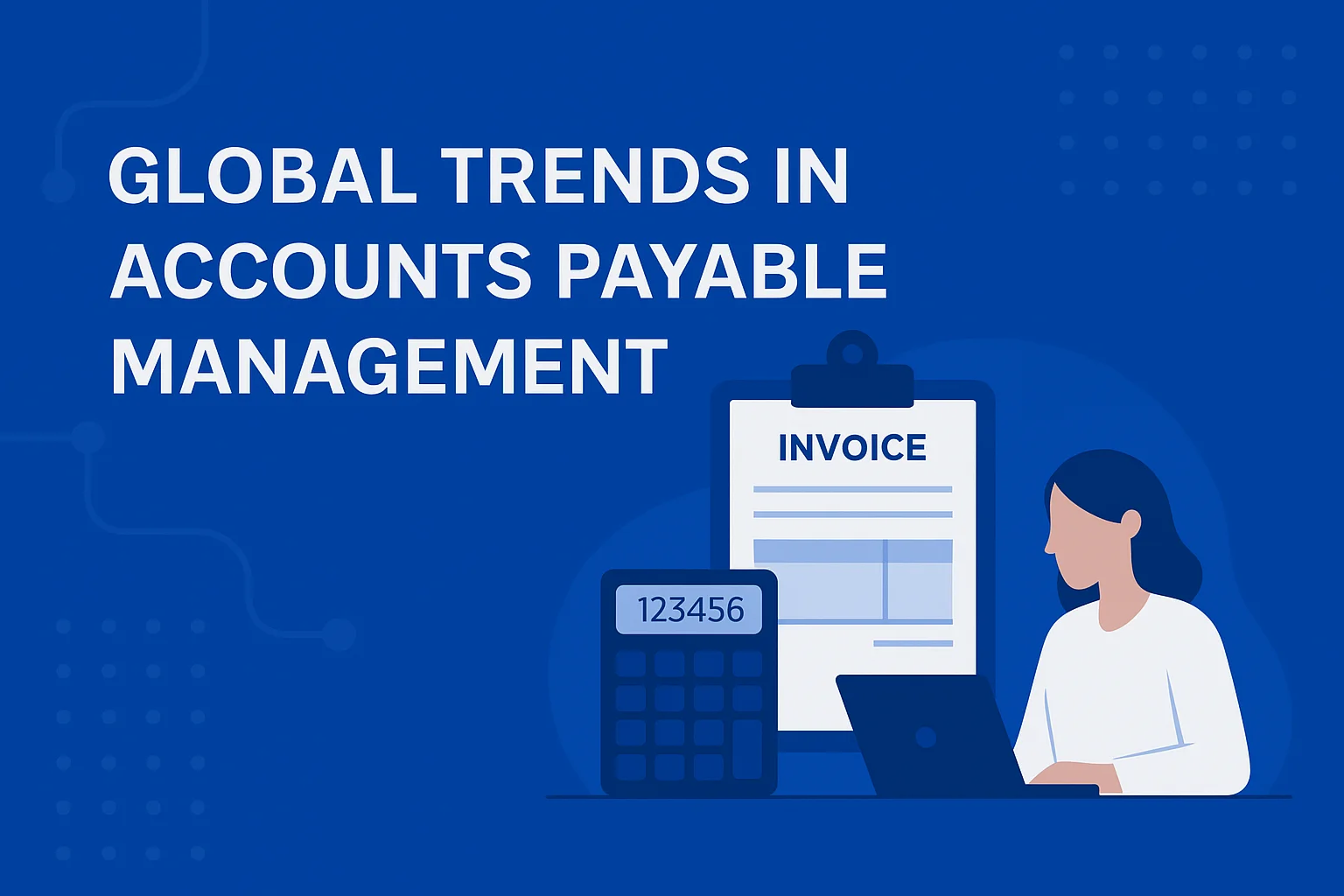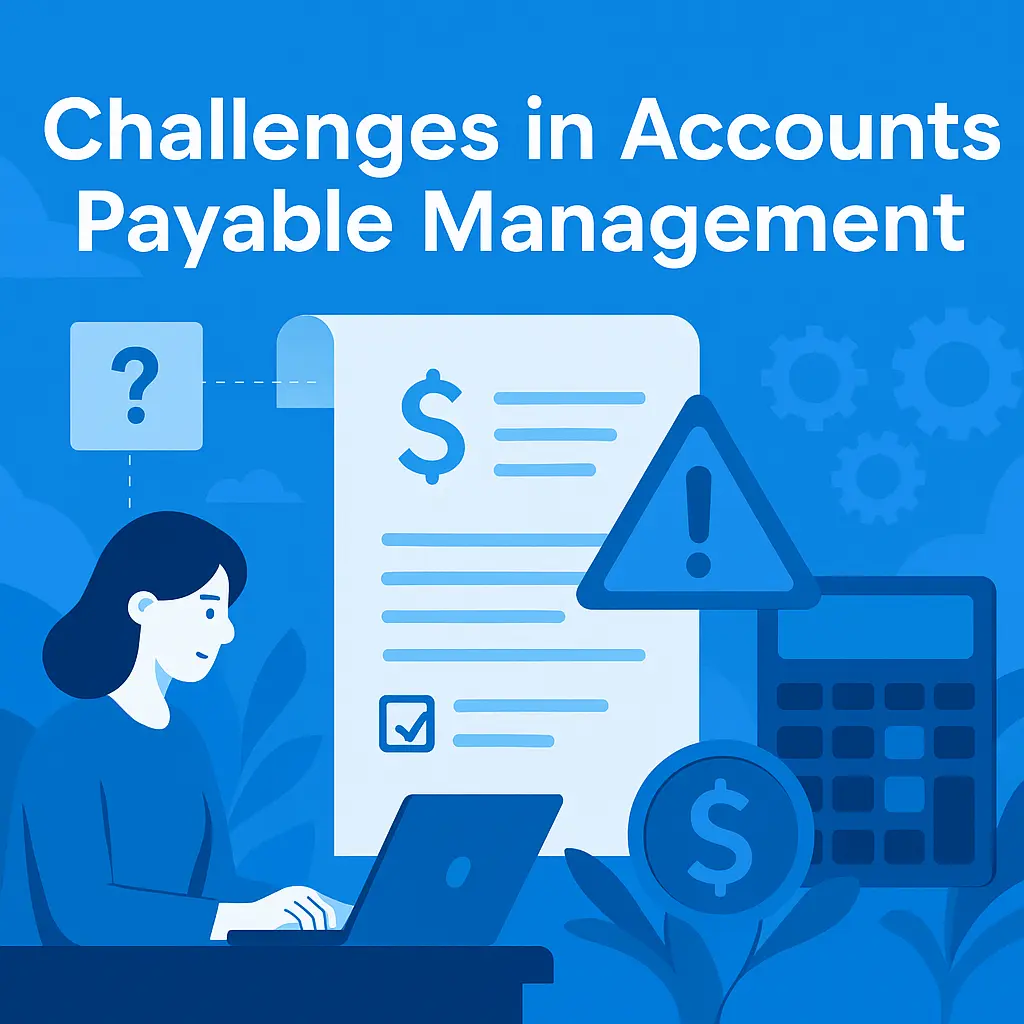The accounts payable (AP) function is evolving rapidly as organizations worldwide embrace technology, process automation, and a stronger focus on data-driven decision-making. By staying ahead of these trends, businesses can unlock better efficiency, compliance, and supplier partnerships. In this article, we explore the most important global trends shaping the future of AP management.
Why It’s Crucial to Track AP Trends
Failing to adapt to new technologies and best practices can leave your AP processes inefficient, error-prone, and vulnerable to fraud. Understanding emerging trends helps you build a forward-looking, resilient financial operation.
Top Trends in Accounts Payable Management
1
Digital Transformation and Automation
Robotic Process Automation (RPA), Artificial Intelligence (AI), and Machine Learning (ML) are becoming standard tools to reduce manual data entry, accelerate processing, and improve accuracy.AI is helping companies predict spend patterns, automate approvals, and identify fraudulent invoices.
2
Cloud-Based AP Platforms
More companies are moving their accounts payable systems to the cloud for real-time collaboration, better scalability, and enhanced security.Bots can handle routine, rules-based tasks in P2P, freeing up staff for more strategic roles.
3
Electronic Invoicing (E-invoicing)
E-invoicing adoption is growing quickly, helping businesses go paperless, reduce costs, and improve invoice cycle times.Electronic invoicing continues to replace manual, paper-based workflows for speed and sustainability.
4
Mobile Approvals
Mobile apps allow finance teams and managers to approve invoices and payments on the go, improving agility and eliminating bottlenecks.Self-service supplier portals enable easier onboarding, document exchange, and dispute resolution.
5
Data Analytics and Reporting
Organizations are leveraging AP data to track payment performance, supplier health, and cash flow patterns, leading to smarter, faster decisions.Cloud solutions are providing real-time visibility, faster implementation, and better scalability.
6
Supplier Relationship Management
Businesses are investing in tools and frameworks to maintain closer, more strategic relationships with their suppliers through consistent communication and fair payment practices.P2P platforms are adding dashboards and predictive analytics to help finance teams make smarter decisions.
7
Sustainability and Environmental Concerns
AP teams are prioritizing greener operations through e-invoicing, paperless workflows, and digital document management to support sustainability goals.As more P2P moves online, stronger cybersecurity frameworks are critical to protect transactions.
8
Risk Management and Compliance
With increased regulations and complex tax requirements, organizations are strengthening AP controls, implementing compliance audits, and focusing on fraud prevention.
9
Integration with Supply Chain Management
Companies are linking AP processes more closely to supply chain systems for better end-to-end visibility, faster dispute resolution, and seamless data flow.
10
Blockchain Exploration
Some organizations are piloting blockchain-based solutions to create transparent, tamper-proof records of AP transactions, reducing fraud risk and enhancing trust.
11
Remote Work Enablements
The shift to hybrid and remote work models has accelerated digital AP adoption, making remote collaboration and approvals a necessity rather than an option.
12
Strengthened Cybersecurity
As AP processes digitize, cybersecurity protections are becoming critical to safeguard supplier payment data and protect against phishing or fraud attacks.
What These Trends Mean for Businesses
By adopting these global trends, organizations can:
- optimize cash flow
- improve compliance
- gain competitive advantage
- enhance employee productivity
- build better supplier relationships
Conclusion
Accounts payable is no longer just a back-office function — it is a vital component of modern finance strategy. Staying on top of emerging trends will position your business for success and resilience in an increasingly digital and global economy.



